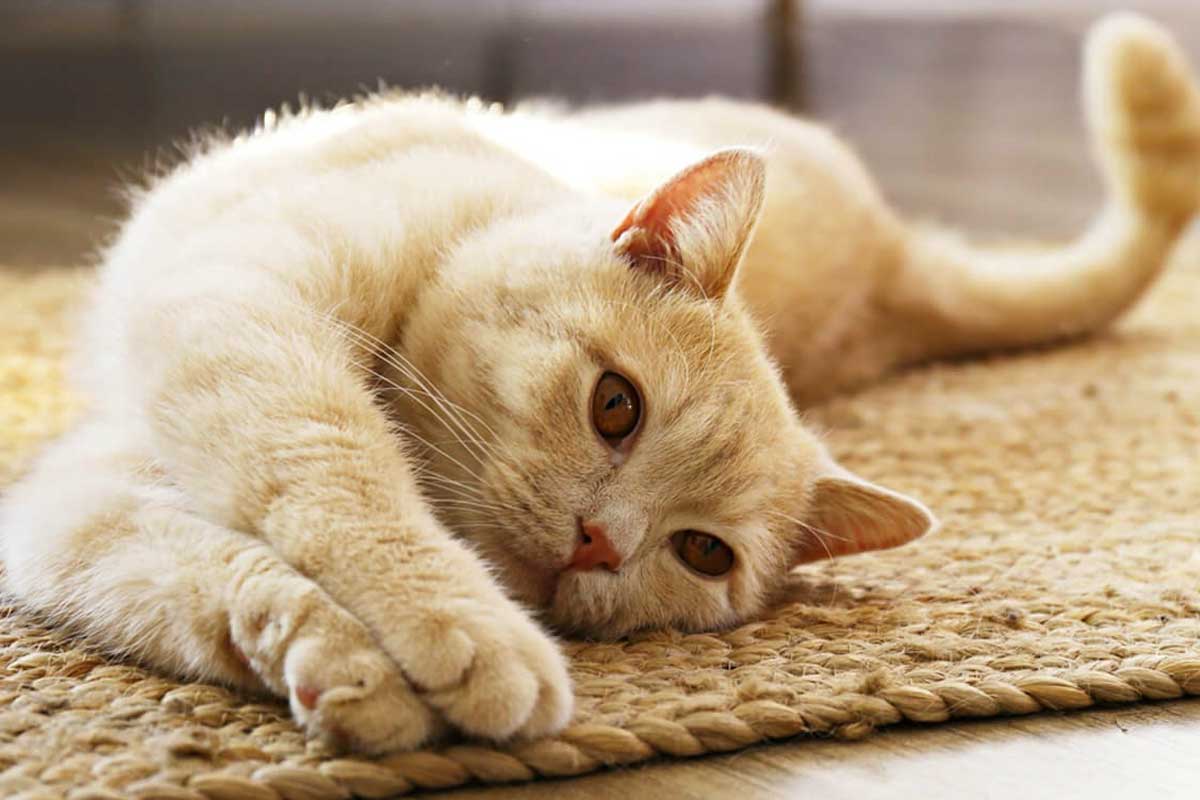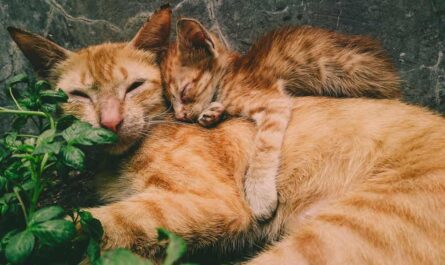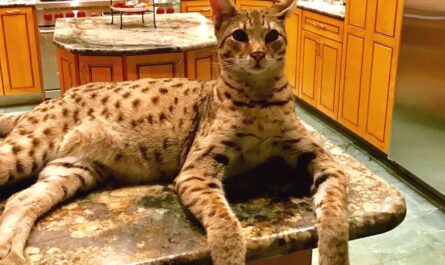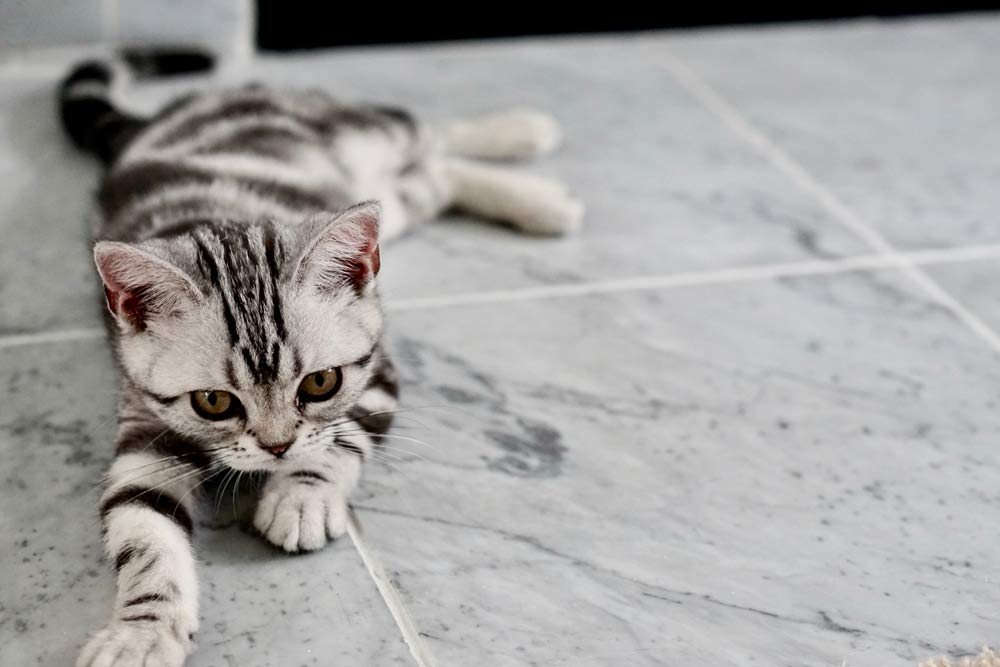What are some signs your cat is a girl or female? Ever find yourself in a hilarious (or slightly embarrassing) situation where you’ve been addressing your cat with the wrong pronouns? The truth is, that identifying a cat’s gender, especially for young kittens, can be a tricky business. Forget the adage about “rough and tumble” boys and “calm and cuddly” girls – the feline world is delightfully diverse, and their personalities shine through much brighter than any anatomical distinctions.
So, how do we embark on this fun and informative journey into the world of feline femininity? Buckle up, cat lovers, because we’re diving deeper than just a quick peek under the tail. We’ll explore 12 subtle signs that might indicate your feline companion leans towards the “queen of the castle” side of the spectrum, all while celebrating the unique individuality of each purrfect friend.
Ditching the Pink Bows and Stereotypes:
First things first, let’s toss those outdated stereotypes out the window. Just like humans, cats come in all shapes, sizes, and personalities. A feisty calico with a penchant for head-butts and zoomies can very well be a girl, while a laid-back, cuddle-loving tabby could be a charming gentleman. Remember, personality traits are not gender-specific, and judging a cat’s inner self-based on preconceived notions is simply unfair.
Now, hormones do play a part in shaping feline behavior, but their influence is often subtle and nuanced. Unspayed females might exhibit certain behaviors like increased vocalizations or rubbing during specific hormonal cycles, but these temporary shifts don’t define their entire personality. Additionally, spaying your cat, regardless of gender, brings numerous health benefits and behavioral improvements, so it shouldn’t be seen as a defining factor in their femininity.
Stay tuned as we explore the diverse and delightful world of feline signs, celebrating the unique spirit of each furry friend, regardless of their gender identity. Remember, the joy of cat ownership lies in appreciating their quirks and showering them with love, not in fitting them into pre-defined boxes. Meow-velous adventures await!
12 Signs Your Cat Might Be a Girl
Ever wondered if your fluffy friend is a purr-fect little lady? While there’s no single definitive way to know your cat’s sex without a visit to the vet, several clues can offer insights into their unique identity. Remember, just like humans, cats come in all shapes and sizes, so these signs aren’t foolproof, but they can be a fun starting point for understanding your feline companion better.
Physical Signs
Calico or Tortoiseshell Coat: A Striking Sign (But Not Always!)
Have you ever marveled at a cat with a mesmerizing coat of patches in orange, black, and cream? These stunning felines are called calicos or tortoiseshells, and they’re almost always girls! The reason lies in the fascinating world of feline genetics. Female cats have two X chromosomes, and each chromosome can carry the gene for either orange or black fur. This unique combination allows for patches of both colors to manifest in their fur, creating the captivating patterns we adore.
However, it’s important to remember that this isn’t a guaranteed sign. Male cats can very rarely have these coat patterns due to a genetic condition called Klinefelter’s syndrome, where they have an extra X chromosome (XXY). So, while spotting a calico or tortoiseshell coat is a strong hint, it’s not an absolute certainty.
Subtle Physical Differences: A Matter of Meowgical Nuances
Just like humans, cats exhibit some physical differences based on their sex. However, it’s crucial to remember that these variations are subtle and can be influenced by breed, individual growth patterns, and overall health. Here are some potential pointers, but keep in mind they’re not set in stone:
- Size: Female cats may sometimes be slightly smaller than males, but this isn’t always the case, especially in certain breeds.
- Facial Features: Some people perceive female cats to have rounder faces and wider-set eyes compared to males. However, this can be subjective and depend on the individual cat’s unique features.
- Tail Carriage: Male cats sometimes hold their tails straighter and higher when walking, while females might keep theirs lower. Remember, tail position can also be influenced by mood and activity level.
Beyond Physical Signs: Embracing Your Cat’s Individuality
Ultimately, the most important aspect of understanding your cat is focusing on their unique personality and needs. Whether they’re a playful mischief-maker or a cuddly lap cat, appreciate their quirks and shower them with love and care. Remember, every cat is special, regardless of their sex, and fostering a strong bond based on mutual respect and affection is the key to a purr-fectly happy relationship!
If you’re curious about your cat’s specific breed or have questions about their care, consider consulting your veterinarian or reputable online resources dedicated to feline health and well-being. With a little research and a lot of love, you can create a truly enriching and joyful life for your furry friend, no matter their sex or coat color.
Behavioral Signs
Cats, with their independent spirits and captivating personalities, bring endless joy to our lives. While understanding their body language and behaviors can help us deepen our bond, it’s important to remember that every cat is unique, regardless of their sex. Instead of focusing solely on gender-based traits, let’s explore some exciting characteristics that cats of all kinds might exhibit!
Vocal Cues: A Symphony of Meows
Cats are vocal creatures, expressing themselves through a range of meows, chirps, and trills. While some studies suggest female cats might have higher-pitched meows compared to males, this isn’t a definitive rule. Pay attention to your cat’s communication style! Consider the context and tone of their meows: are they seeking attention, requesting food, or simply greeting you? Understanding their unique meowcabulary can strengthen your connection.
Nurturing Instincts: Beyond Motherhood
Many female cats, even those who haven’t had kittens, display nurturing behaviors. They might carry objects like toys in their mouths, mimicking the act of carrying kittens. Some might even groom other cats or even friendly dogs, offering a comforting touch. Remember, not all female cats exhibit these behaviors, and some male cats might surprise you with their nurturing side!
Playful Pranks: Mischief Makers of All Genders
Cats, regardless of sex, are known for their playful antics. They might stalk imaginary prey, pounce on unsuspecting toys, or engage in playful wrestling matches. Some female cats might be particularly energetic and mischievous, but this isn’t always the case. Embrace your cat’s playfulness and provide them with enriching activities to keep their minds and bodies stimulated.
Affectionate Interactions: Every Cat on Their Terms
Some cats love head bumps, gentle strokes, and cuddling sessions, while others prefer a more independent approach. While female cats might sometimes be portrayed as more demonstrative in their affection, remember that every cat shows love in their way. Observe your cat’s body language and respect their boundaries. A slow blink, a gentle head nudge, or even a contented purr can all be signs of their affection.
Social Dynamics: Building Unique Bonds
Cats can form strong bonds with specific humans, other pets, or even inanimate objects. While some female cats might be known for their close attachments to certain individuals, this isn’t a universal trait. Every cat has their own preferences and social needs. Encourage positive interactions with different people and pets in a safe and controlled environment, respecting your cat’s comfort level.
Remember, the most important aspect of understanding your cat is to focus on their individuality. Observe their behaviors, preferences, and communication style to build a strong and loving bond, regardless of their sex.
Less Common Signs
Determining your cat’s sex can be a curious endeavor, especially when physical characteristics might not always provide a definitive answer. While some telltale signs can offer clues, it’s important to remember that every feline is unique, and their personalities and behaviors can sometimes defy expectations. This article delves beyond the traditional “boy or girl” indicators, exploring some less common signs that might shed light on your cat’s biological sex while emphasizing the importance of celebrating their individuality regardless of their gender identity.
Spraying Behavior: Not Just a “Boy Thing”
The misconception persists that spraying urine is solely a male behavior. However, unspayed female cats can also engage in spraying, often due to territoriality, stress, or hormonal fluctuations. This behavior doesn’t necessarily define your cat’s gender identity; it’s more about understanding their emotional state and addressing the underlying cause. If you notice spraying, consult your veterinarian to rule out medical issues and explore potential solutions like environmental enrichment, stress management techniques, or spaying/neutering.
Heat Cycles: A Subtle Shift in the Feline Symphony
Female cats experience regular heat cycles, and periods of increased receptivity to mating. While these cycles might not be as dramatic as in other mammals, they can manifest in subtle behavioral changes. You might observe increased vocalizations, rubbing against objects, or heightened affection towards humans and other cats. These changes are temporary and usually last around a week. Spaying your cat can prevent unwanted pregnancies and eliminate the behavioral and hormonal fluctuations associated with heat cycles.
Maternal Vocalizations: A Symphony of Motherhood
Pregnancy and motherhood evoke a unique range of vocalizations in female cats. The familiar purr, often associated with contentment, can take on a deeper, more rhythmic quality as they nurture their kittens. Additionally, “trilling” sounds, high-pitched and repetitive, might be used to communicate with their young. These vocal expressions are a beautiful testament to the maternal bond and offer a glimpse into the emotional depth of our feline companions.
Urinary Tract Issues: A Cause for Concern
Female cats are more susceptible to urinary tract infections (UTIs) than their male counterparts. Signs of a UTI can include frequent trips to the litter box with little to no output, straining to urinate, or blood in the urine. If you notice any of these changes, consult your veterinarian promptly, as UTIs can be painful and require medical attention. Early diagnosis and treatment are crucial for your cat’s health and well-being.
Remember, these signs are just pieces of a larger puzzle. Your cat’s personality, behavior, and preferences are unique expressions of their being. Embrace their quirks, celebrate their individuality, and focus on building a loving and enriching bond with your feline friend, regardless of their biological sex. If you have any concerns or questions, don’t hesitate to consult your veterinarian for personalized guidance.
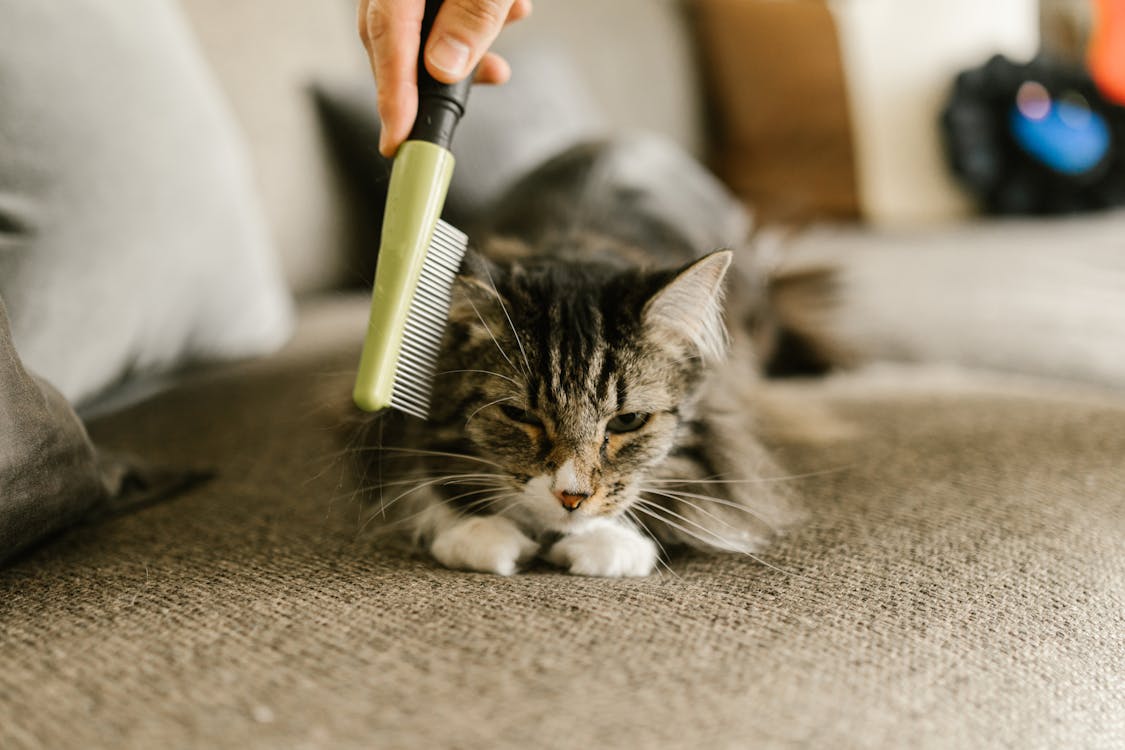
Decoding the Mystery: Understanding Your Feline Friend’s Individuality
While physical characteristics can offer clues, determining a cat’s sex isn’t always as straightforward as it might seem. Beyond biological markers, each feline carries a unique personality and set of quirks that shape who they truly are. This article aims to navigate the wonderful world of cat individuality, celebrating the beautiful spectrum of personalities and behaviors displayed by our furry companions, regardless of gender. How AI, ChatGPT maximizes earnings of many people in minutes
A Mosaic of Clues, Not Absolute Answers
The sections you’ve mentioned – coat color, size, and even vocalizations – can sometimes hint at an individual’s sex. However, it’s important to remember that these are merely pieces of a larger puzzle. Just like humans, cats come in all shapes and sizes, personalities and preferences. A calico coat, typically associated with females, can occur in rare male cats. Similarly, a larger frame doesn’t automatically mean “boy,” and even vocalizations can vary greatly between individuals. Motivation – Mind – Success – Thinking – Productivity – Happiness
Embracing the Uniqueness of Each Pawsome Purrsonality
The true magic of cats lies in their individuality. Each feline friend is a unique tapestry woven from genetics, experiences, and personal quirks. Focusing solely on physical markers to determine their sex can overshadow the joy of discovering their true selves. Whether they’re a playful whirlwind or a serene cuddle buddy, a talkative chatterbox or a silent observer, their special personality is what truly makes them who they are.
Caring for Your Feline Companion
Instead of fixating on gender-specific needs, it’s crucial to provide every cat with the care they deserve. This includes regular veterinary checkups, a balanced diet tailored to their age and activity level, and a loving, stimulating environment that caters to their individual needs. Spaying or neutering, regardless of sex, offers numerous health benefits and helps control pet populations. Consulting your veterinarian can help you make informed decisions for your feline friend’s well-being. Business – Money Making – Marketing – E-commerce
Fun Facts About Felines
Did you know that female cats, often called queens, were revered as goddesses in ancient Egypt? Or that some breeds, like the Turkish Angora, are more likely to have calico markings? Exploring the fascinating world of cats, their history, and unique behaviors can deepen your appreciation for these remarkable creatures.
Seeking Expert Guidance
If you have concerns about your cat’s health, behavior, or any aspect of their care, always consult a qualified veterinarian. They can provide professional advice and address any questions you might have, ensuring your feline friend receives the best possible care and thrives in your loving home. Health books, guides, exercises, habits, Diets, and more
Remember, every cat is unique and deserves to be cherished for who they are, gender aside. By understanding their individual needs and celebrating their personalities, we can build strong, fulfilling relationships with our feline companions, enriching our lives with their purrs, cuddles, and endless antics.
The Mystery of the Meow: Understanding Your Cat’s Unique Identity
The delicate, independent spirit of a cat can bring endless joy and companionship to our lives. While knowing your feline friend’s gender can be helpful for certain aspects of care, it’s important to remember that their unique personality and quirks are what truly define them. This article aims to explore some of the physical characteristics and behaviors that may be associated with female cats while emphasizing that these are just general guidelines and don’t hold for every feline individual.
Curious Clues: Unraveling Physical Traits
One way to approach the question of your cat’s gender is by observing their physical features. However, it’s essential to remember that these characteristics can vary greatly between breeds and individual cats, making definitive identification based solely on appearance challenging. Fitness – Meditation – Diet – Weight Loss – Healthy Living – Yoga
- Color Coat: Traditionally, most calico and tortoiseshell cats are female due to the unique genetic makeup required for these coat patterns. However, there are rare exceptions of male calicos and tortoiseshells. Conversely, many other coat colors, like orange tabby, can be found in both male and female cats.
- Body Size: On average, male cats tend to be larger and more muscular than females. However, this is not a definitive rule, and there are plenty of robust female felines and petite male cats out there.
A Dance of Demeanor: Exploring Behavior Clues
Behavior can also offer some hints, but similar to physical traits, individual personalities play a significant role.
- Vocalizations: Female cats are often known for their softer, higher-pitched meows, while males tend to have deeper, more pronounced vocalizations. However, this is not always the case, and some female cats can have quite impressive vocal ranges.
- Social Interactions: Some sources suggest female cats might be more independent and less likely to seek constant attention compared to males. However, every cat is unique, and their social preferences can vary greatly based on their personalities and past experiences.
Beyond the Label: Embracing Individuality
It’s important to remember that these are just general tendencies, and every cat is an individual with a unique personality, preferences, and quirks. Focusing solely on gender identification can overshadow the joy of discovering and appreciating your cat’s true nature. RPM 3.0 – 60% CONVERSION & Money for Affiliate Marketing
The Joy of Discovery
Instead of fixating on specific gender markers, approach your cat’s identity with curiosity and appreciation. Observe their unique traits, behaviors, and preferences. Do they have a particular fondness for napping in sunbeams? Are they a playful explorer or a cuddly lap cat? Embrace the journey of discovering their quirks and what makes them truly special.
Celebrating Feline Friends
Ultimately, the bond you share with your cat transcends any specific label. Whether they identify as male, female, or anything beyond, what truly matters is the unique connection you share. Cherish their companionship, celebrate their individuality, and shower them with love and understanding. Cat accessories on Amazon
Call to Action
Share your own stories and observations about your feline friends! Whether you have a playful female cat who loves chin scratches or a cuddly male cat who enjoys bedtime snuggles, your experiences can help foster a sense of community and appreciation for the diverse and wonderful world of cats. Remember, every meow tells a unique story, and together, we can celebrate the magic of our feline companions in all their magnificent individuality.
Other Interesting Articles
- How to Stop A Cat from Spraying after Neutering: 11 Tips
- How to Tell if A Cat is in Pain from Arthritis: How to Help
- 14 Reasons Why Is My Cat Making Weird Purring Noises
- How to Take Care of A Kitten without A Mother: 21 Tips
- What Is Caterwauling? 10 Most Common Reasons Cats Do It
- How to Introduce A Cat To A New Home When Moving?
- Cat Declawing: Tips, FAQs, Health, Alternatives, Pros, Cons
- New Cat? 20 Common Warning Signs When Introducing Cats
- 23 Sure Signs Your Cat May Be in Pain and How to Help It
- How to Stop A Neutered Cat From Spraying: 15 Simple Tips
- 12 Signs Your Cat May Require a Feline Companion
- Feline Pheromones: 12 Ways Calming Cat Pheromones Work
- Do Cats Feel Lonely without Other Cats? 6 Signs of Loneliness
- 10 Reasons Why Cats Hiss: How To Stop The Behavior
- Cat Feeding: Tips, Guide, FAQs, Chart for Kittens to Veterans
- Cat Vaccinations: Schedule, FAQs, Side Effects, and Costs
- 44 Strange, Weird, and Random Cat Behaviors Explained
- 21 Pro Tips for Fostering Kittens: Essential Care Guide
- 18 Cat Sounds Your Feline Makes: What They Mean
- Sexing Kittens: How to Tell, Determine the Sex of Your Kitten
